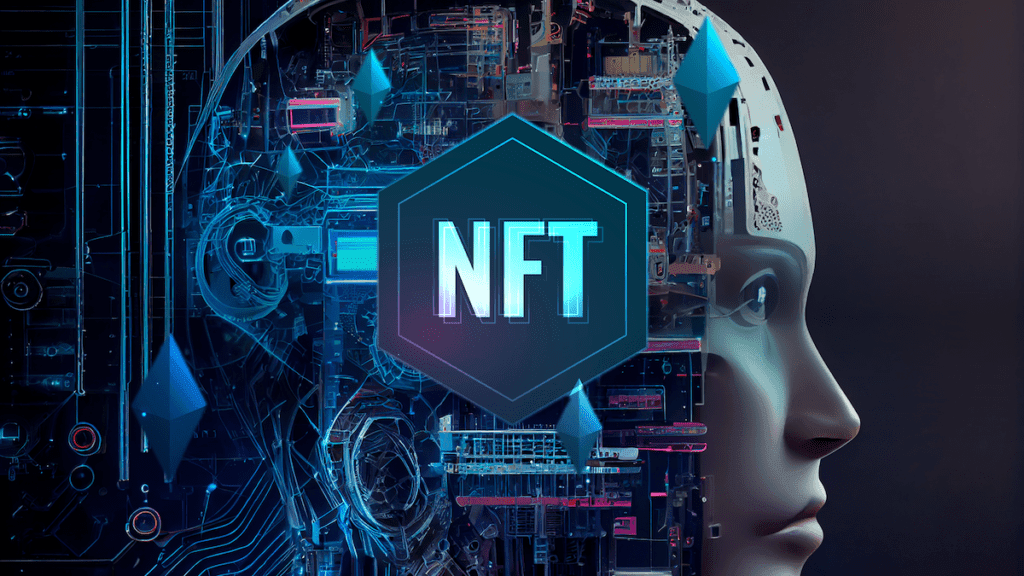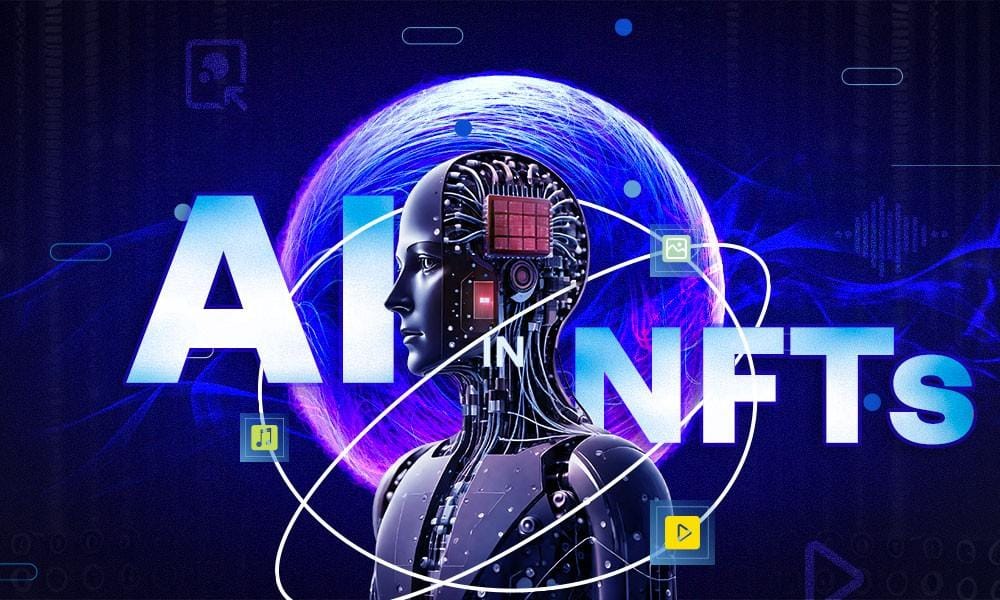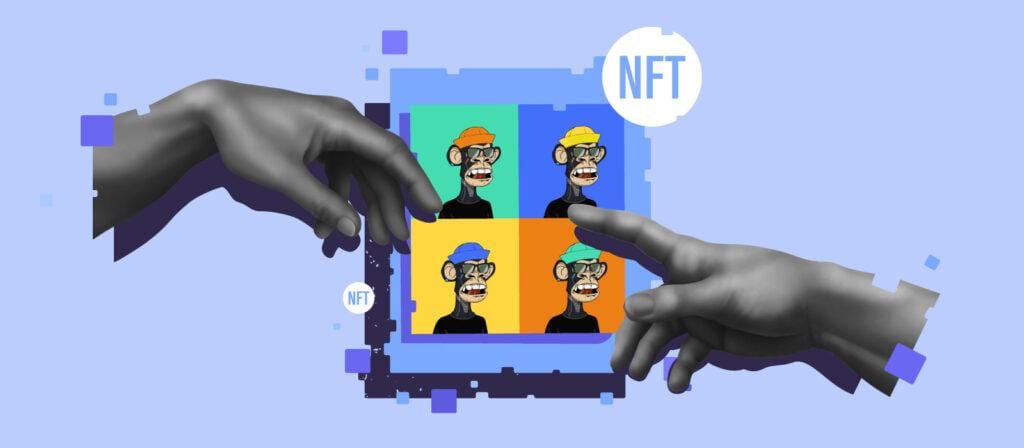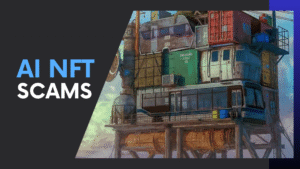The rise of AI-generated NFTs has opened up exciting opportunities for artists and collectors alike. However, navigating this new technology comes with its own set of challenges. To ensure that your AI NFT collection thrives, it’s crucial to understand and avoid common NFT art errors.
This guide will help creators, investors, and collectors identify and avoid common AI NFT mistakes, ensuring the longevity and value of their digital assets.
Understanding AI NFT Mistakes
AI NFTs are digital assets created using artificial intelligence technologies. While they can be innovative and unique, the process of creating and managing these NFTs can lead to several mistakes if not approached carefully.
AI NFT mistakes stem from various factors, including copyright issues, poor-quality generation, smart contract flaws, and lack of market research. These NFT art errors can devalue an NFT collection, limit its audience reach, and result in financial losses. By recognizing and addressing these NFT art errors, creators can optimize their AI-generated NFT projects.
9 Common AI NFT Mistakes and Their Solutions

Also Read: How to Create NFT with AI in Under 30 Minutes: A Beginner’s Guide
1. Lack of Originality and Over-Reliance on AI
The Problem:
One of the most common NFT art errors is the lack of originality in AI-generated pieces. Many artists rely entirely on AI algorithms, leading to repetitive and uninspired creations that fail to stand out in the marketplace.
Solution:
- Use AI as a tool rather than a creator. Infuse personal artistic vision into the generated pieces.
- Experiment with unique datasets to train AI models, ensuring distinct styles.
- Avoid using pre-generated templates that result in oversaturated content.
2. Copyright and Intellectual Property Issues
The Problem:
AI models often scrape the internet for data, leading to potential copyright infringements. If an AI-generated NFT resembles copyrighted material, creators may face legal consequences.
Solution:
- Train AI on licensed or self-created datasets.
- Use platforms that offer copyright-compliant AI training data.
- Verify AI-generated outputs for similarities to existing artworks.
3. Poor Metadata and Smart Contract Errors
The Problem:
Incorrect or incomplete metadata can affect an NFT’s functionality, making it difficult for marketplaces to list and display the artwork properly. Smart contract flaws may lead to security vulnerabilities and ownership disputes.
Solution:
- Use reliable NFT minting platforms with user-friendly metadata generation tools.
- Ensure smart contracts are audited for security and functionality.
- Verify metadata integrity before finalizing the minting process.
4. Ignoring Market Trends and Audience Preferences
The Problem:
Some AI-generated NFT collections fail to align with current market trends, leading to low engagement and poor sales.
Solution:
- Conduct market research to understand collector preferences.
- Analyze successful AI NFT projects and identify elements that contribute to their popularity.
- Engage with NFT communities for insights into trending themes.
5. Low-Quality AI Art Generation
The Problem:
AI-generated art can sometimes appear pixelated, distorted, or inconsistent, reducing its appeal to collectors.
Solution:
- Use advanced AI models capable of high-resolution image generation.
- Refine AI outputs through manual editing and enhancements.
- Test various algorithms to identify the best fit for a particular artistic style.
6. Ignoring Gas Fees and Blockchain Costs
The Problem:
High gas fees and blockchain transaction costs can significantly cut into an artist’s profits, making NFT minting inefficient.
Solution:
- Choose blockchain networks with lower transaction fees (e.g., Polygon, Tezos).
- Optimize smart contracts to reduce gas fees.
- Time NFT minting and transactions when gas fees are at their lowest.
7. Failing to Build a Community
The Problem:
An AI NFT project without an engaged audience is unlikely to gain traction, resulting in poor visibility and sales.
Solution:
- Leverage social media and NFT communities to create awareness.
- Engage in collaborations with other artists and influencers.
- Offer incentives such as exclusive drops or utility features for collectors.
8. Lack of Long-Term Utility and Roadmap
The Problem:
Many AI NFT projects lack a clear roadmap or utility, leading to diminished interest after the initial hype.
Solution:
- Incorporate real-world benefits, such as exclusive access, royalties, or gamification elements.
- Provide a clear project roadmap with future updates.
- Engage with the community to sustain long-term interest.
9. Ignoring Legal and Regulatory Considerations
The Problem:
With evolving regulations surrounding NFTs, failing to comply with legal frameworks can result in potential legal action.
Solution:
- Stay updated with NFT-related legal developments.
- Consult legal experts for guidance on compliance and intellectual property rights.
- Ensure transparency in terms of service for NFT buyers.

Best Practices for Avoiding AI NFT Mistakes
Here are some best practices to help you avoid common AI NFT mistakes:
1. Develop a Clear Artistic Vision
Before diving into creation, take time to define what you want your collection to represent. Consider the following:
- What themes or messages do you want to convey?
- How will your art stand out in a crowded marketplace?
- What emotions do you want your audience to feel?
A well-defined vision will guide your creative process and help maintain consistency across your collection.
2. Prioritize Quality Control
Quality should never be compromised when creating AI-generated art. Implement these strategies:
- Use advanced AI tools that allow for high-resolution outputs.
- Regularly review and refine your work before minting it as an NFT.
- Seek feedback from peers or mentors in the art community.
By ensuring high-quality outputs, you enhance the desirability of your NFTs.
3. Engage with Your Community
Building a supportive community around your work can significantly impact its success. Consider these approaches:
- Actively participate in social media platforms where NFT enthusiasts gather.
- Host AMAs (Ask Me Anything) or live streams to discuss your work and the creative process.
- Offer exclusive content or behind-the-scenes looks at your artistic journey.
Engagement fosters loyalty among collectors and helps spread awareness of your collection.
4. Implement Strong Security Measures
Security is paramount in the digital asset space. Protect yourself by:
- Using reputable wallets and marketplaces.
- Enabling two-factor authentication on all accounts related to your NFTs.
- Regularly updating passwords and being cautious about sharing sensitive information.
By prioritizing security, you safeguard both your assets and your reputation in the community.
Also Read: The Rise of AI in NFT Art: Why It’s the Perfect Time to Start Creating
Advanced Strategies to Avoid Common AI NFT Mistakes
To further enhance your chances of success in the AI NFT space, consider these advanced strategies:
1. Experiment with Different AI Tools
Utilizing various AI art generation tools can yield diverse results. Explore platforms like DALL-E 3 or Midjourney for unique styles and outputs. Experimentation can lead to unexpected creativity that sets your work apart.
2. Create Limited Edition Pieces
Scarcity can drive demand for NFTs. Consider creating limited edition pieces within your collection to encourage collectors to act quickly before they sell out.
3. Utilize Effective Marketing Techniques
Marketing plays a crucial role in the success of any NFT project. Implement strategies such as:
- Collaborating with influencers in the NFT space.
- Creating engaging content that showcases your art on platforms like Instagram or TikTok.
- Utilizing email newsletters to keep interested parties updated on new releases or events.
Effective marketing increases visibility and drives sales.

Conclusion
Creating an AI-generated NFT collection presents unique opportunities but also comes with challenges that require careful navigation. By understanding common AI NFT mistakes, adhering to best practices, and employing advanced strategies, you can build a successful collection that resonates with collectors and stands out in a competitive market.
Remember, the key lies in maintaining quality, engaging with your audience, and continuously learning from both successes and failures within this evolving landscape. With dedication and creativity, you can avoid NFT art errors and thrive in the exciting world of AI NFTs.


